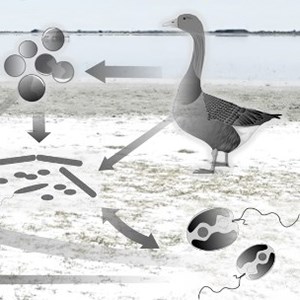Contact
Department of Aquatic Sciences and Assessment, Division of Microbial Ecology
Department of Aquatic Sciences and Assessment, Division of Microbial Ecology

Soda lakes are lakes with pH values between 9 and 12, i.e. strongly alkaline lakes. They are often characterized by rapidly changing environmental conditions, making them perfect subjects for the study of microbial adaptation to a changing climate. They are also of interest because of the presence of enzymes useful for the energy sector and the pharmaceutical industry.
Inland aquatic systems are substantial processors of terrestrial carbon and play a significant role in the global carbon cycle. However, the lakes’ contribution to the global carbon budget depends on their carbon and the processes catalyzed by their microorganisms. Soda lakes are special alkaline aquatic systems that have extremely high turnover of carbon and nutrients and to the best of our knowledge the highest dissolved organic carbon (DOC) concentration in natural systems.
Due to soda lakes’ shallow and often intermittent character they are characterized by rapidly changing environmental conditions that mimic changes that are anticipated to increase in frequency and extent across diverse ecosystems due to climate change. These properties make soda lakes perfect subjects for the study of microbial adaptation to changing conditions from both an eco-evolutionary and ecosystem functioning perspective, including the study of microbial functions that could make them potential carbon processing hotspots via the decomposition of their massive DOC pool. Furthermore, soda lakes are of special interest from a bioprospecting perspective as their halophilic and alkalophilic enzymes involved in nutrient cycling or secondary metabolite production could be welcomed by the energy sector or the pharmaceutical industry.
In this project we aim to understand how microorganisms of soda lakes cope with exposure to extreme conditions and maintain functionality under the rapidly changing circumstances. We compare soda lake metagenomes from around the world to create an inventory of the biogeography, diversity and evolutionary origin of keystone soda lake microorganisms and estimate the contribution of soda lakes to the global carbon budget by outlining the carbon metabolism of their microbiome coupled with onsite greenhouse gas emission measurements.
Wenner-Gren Foundation (2021-2022)